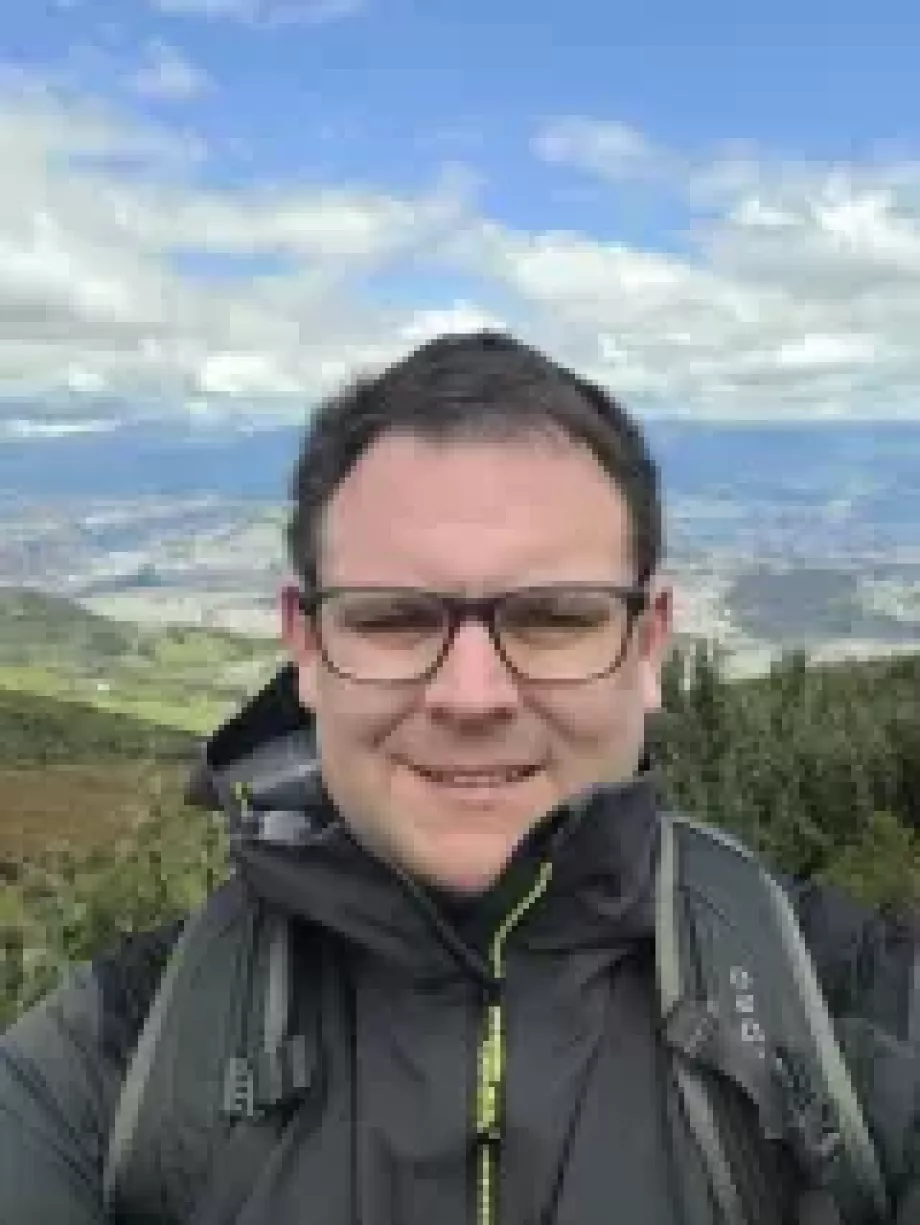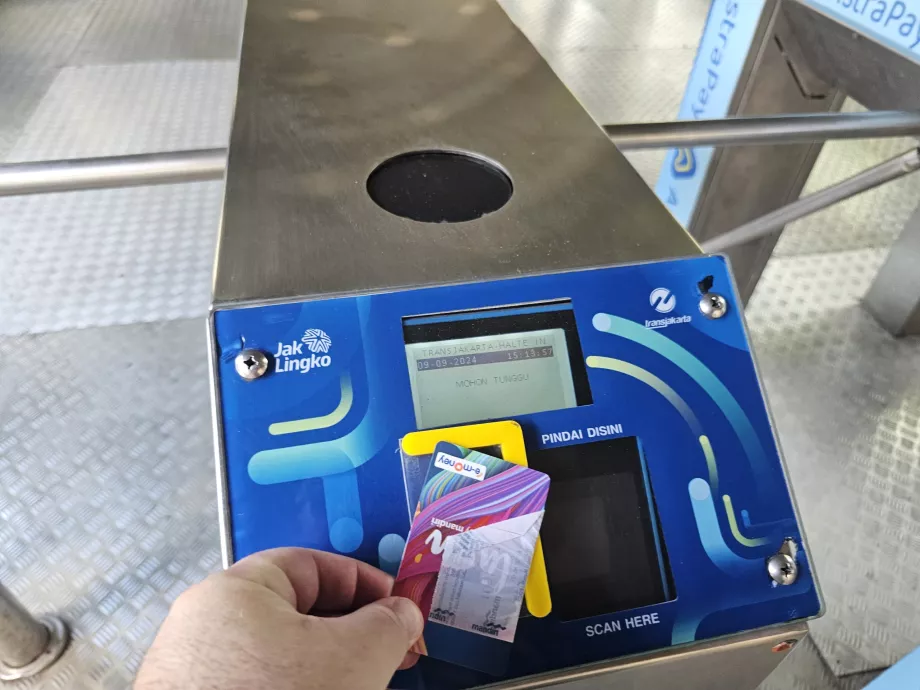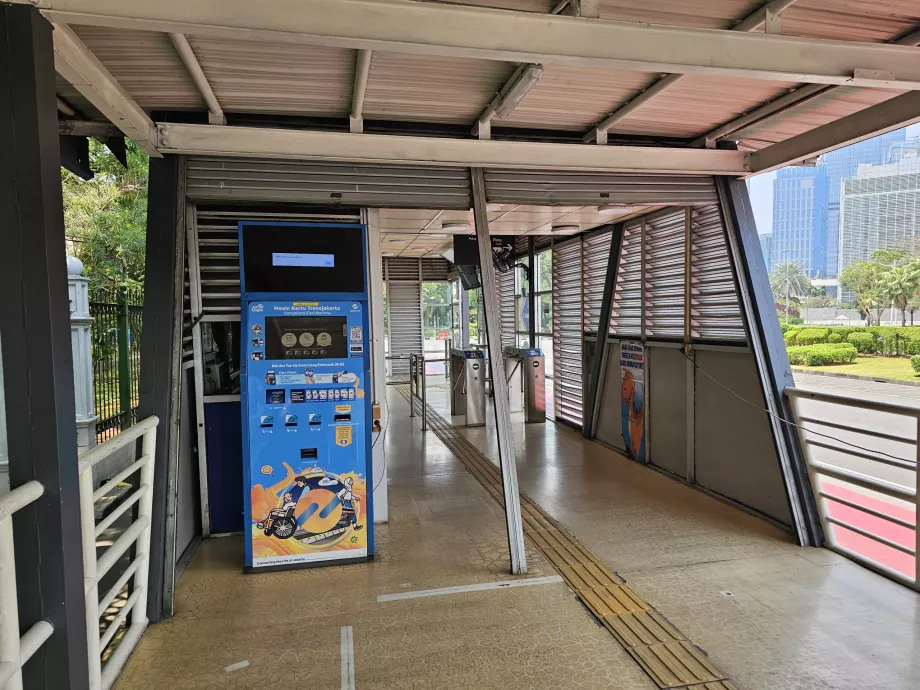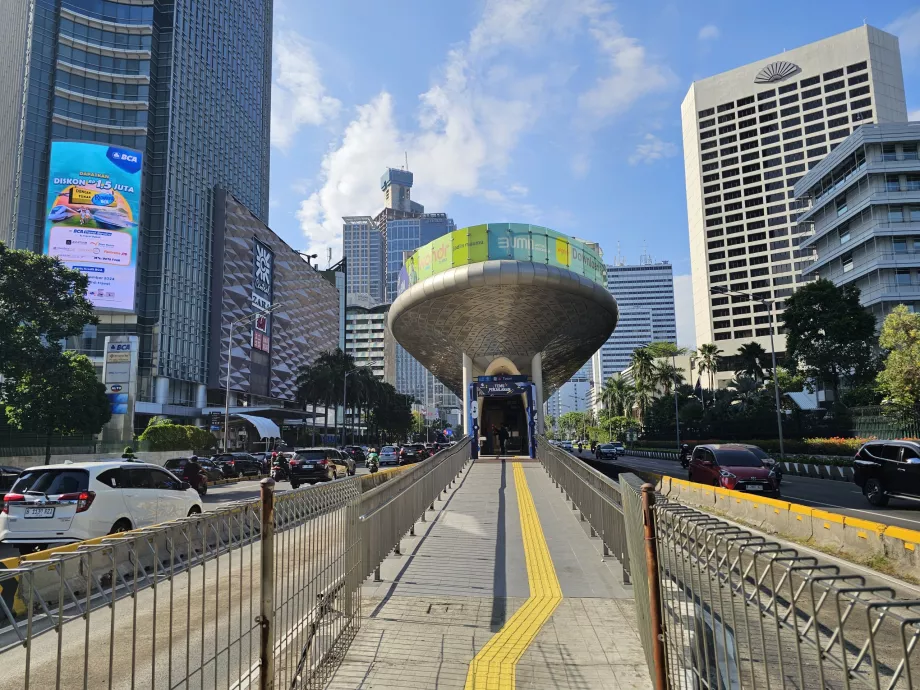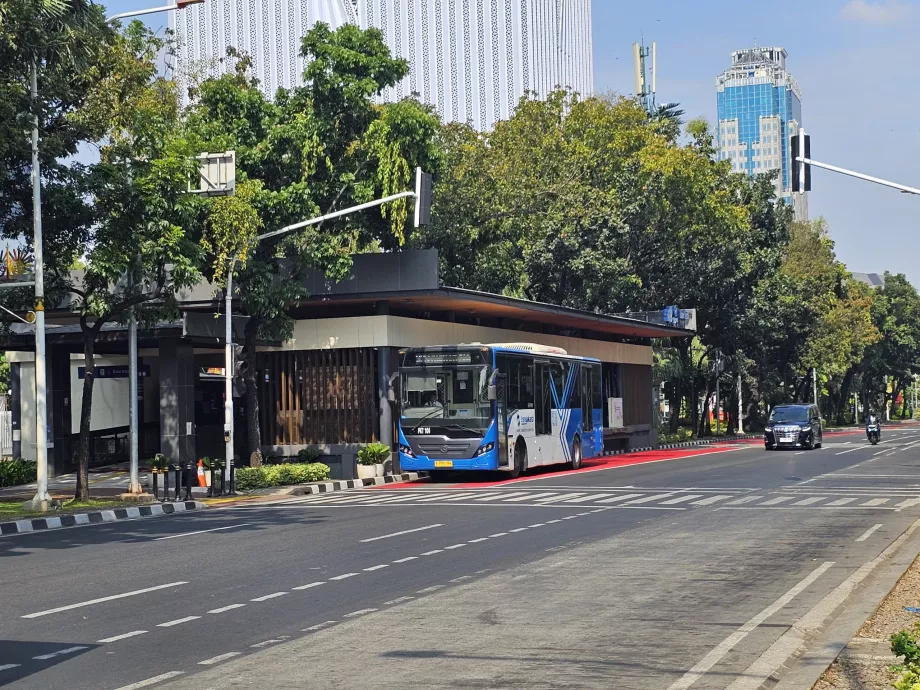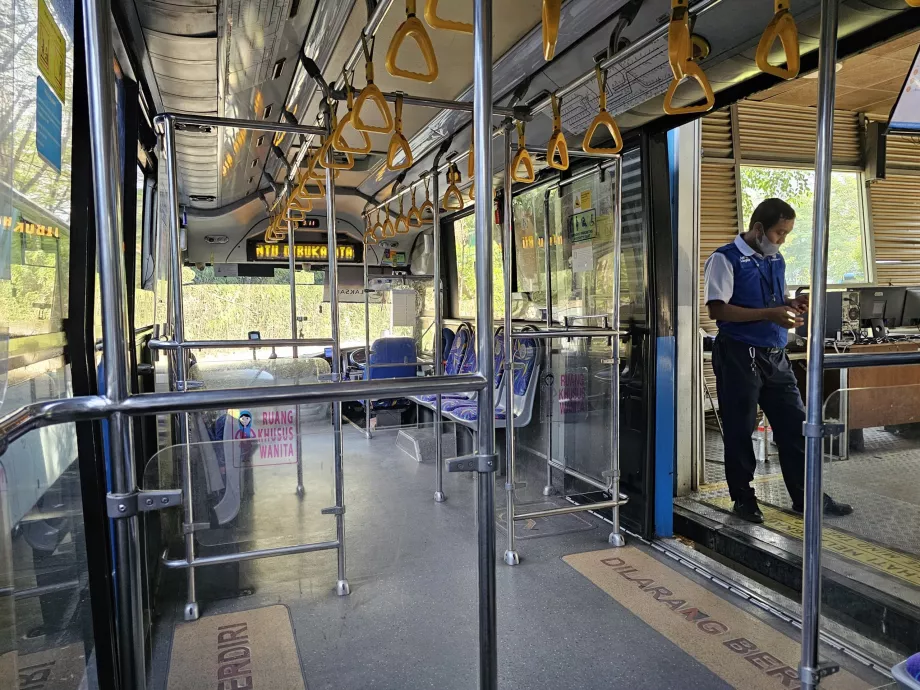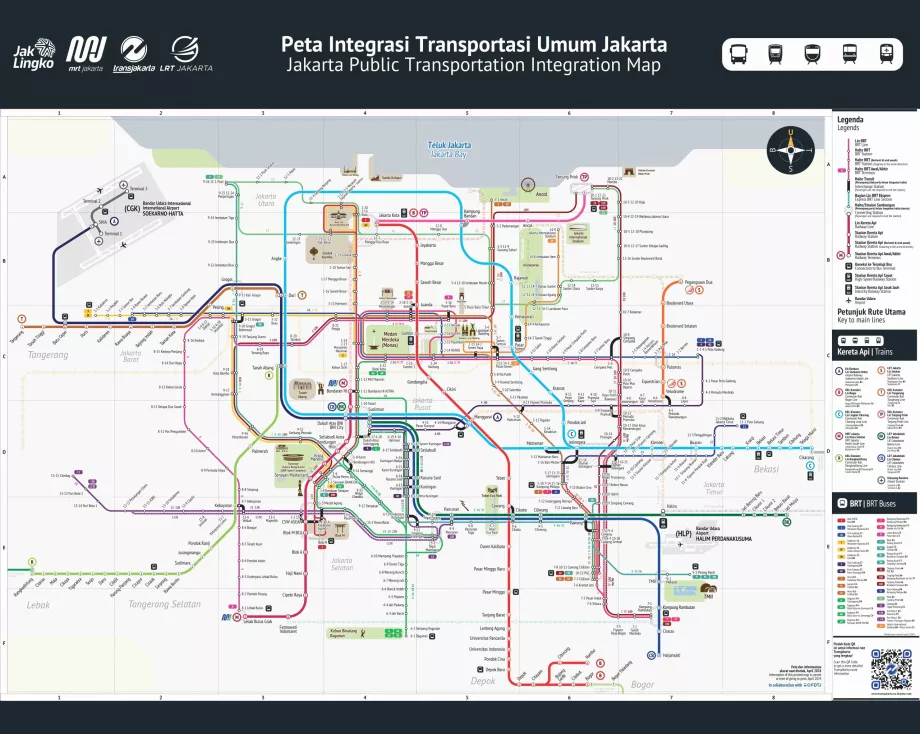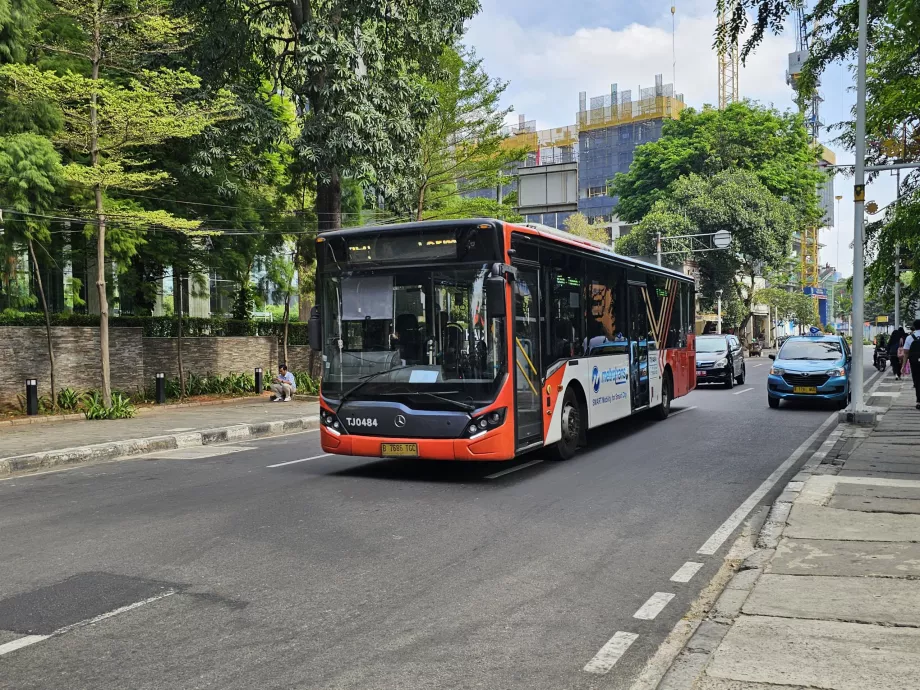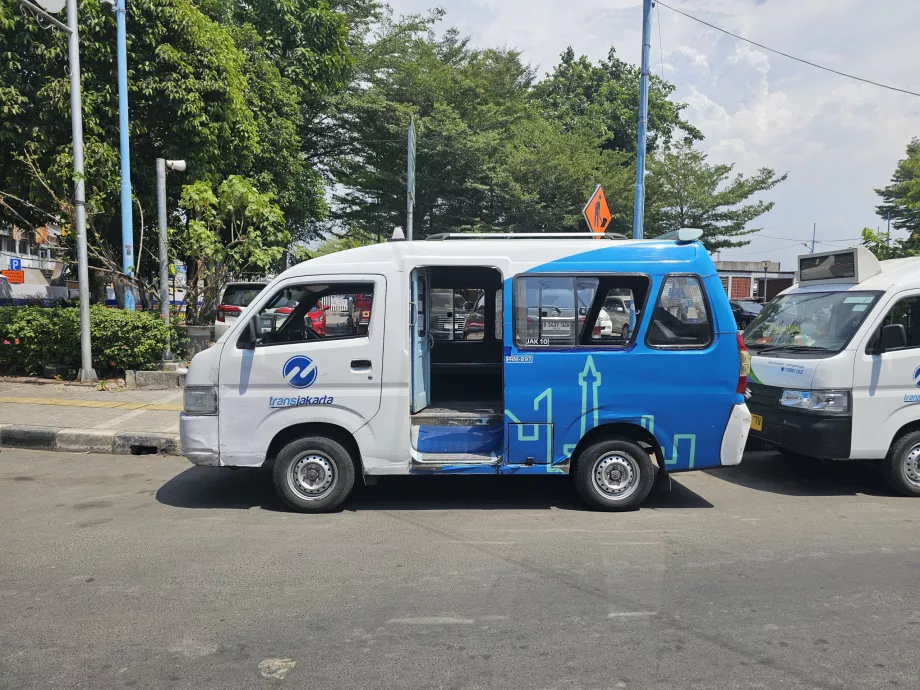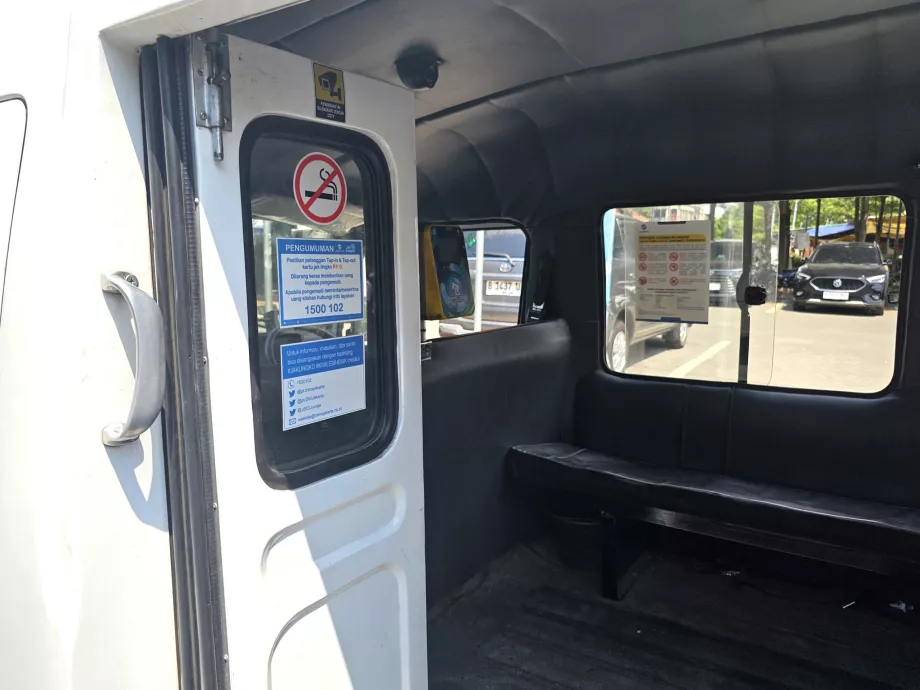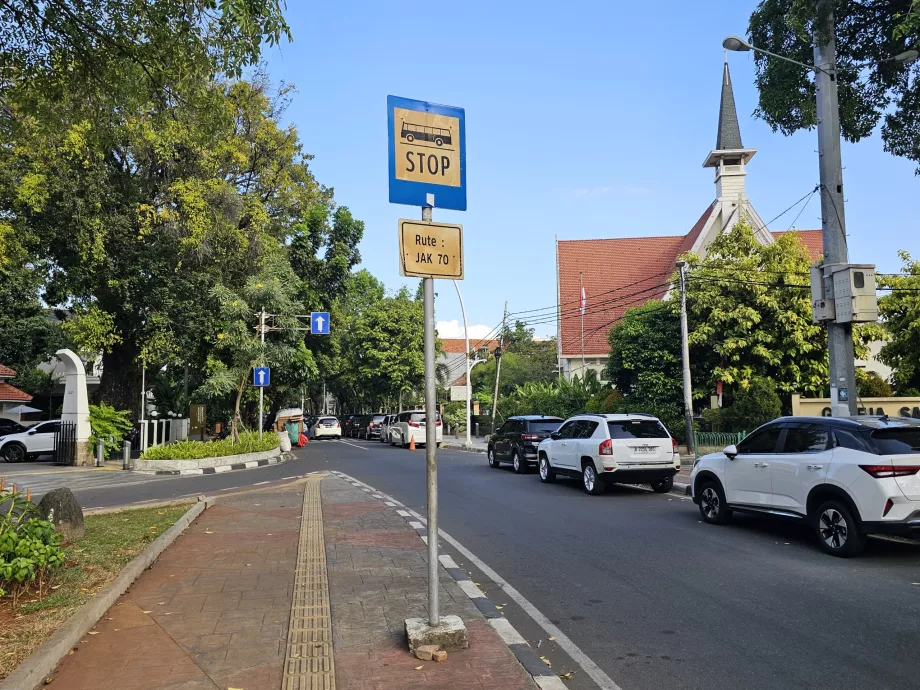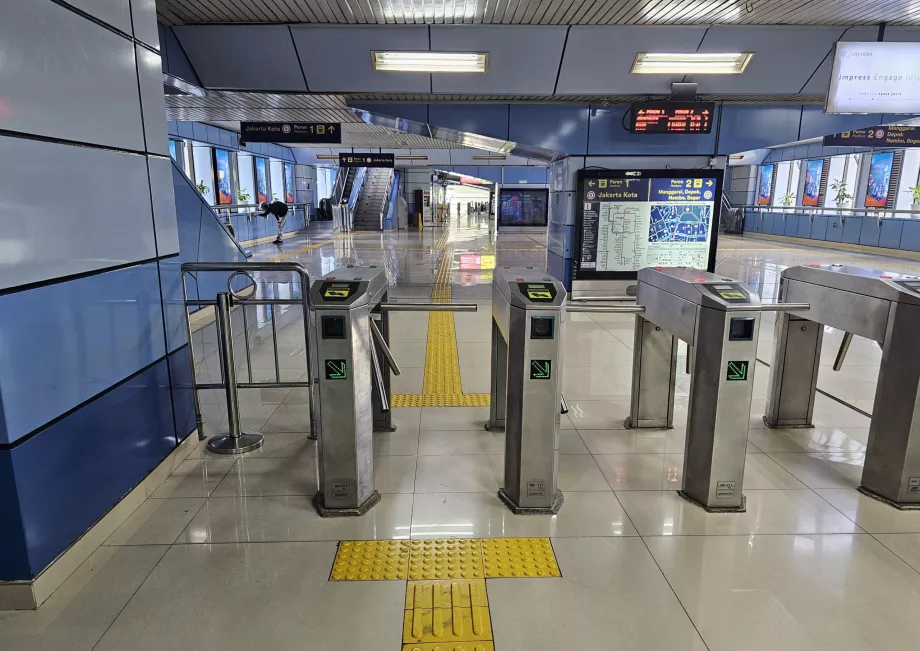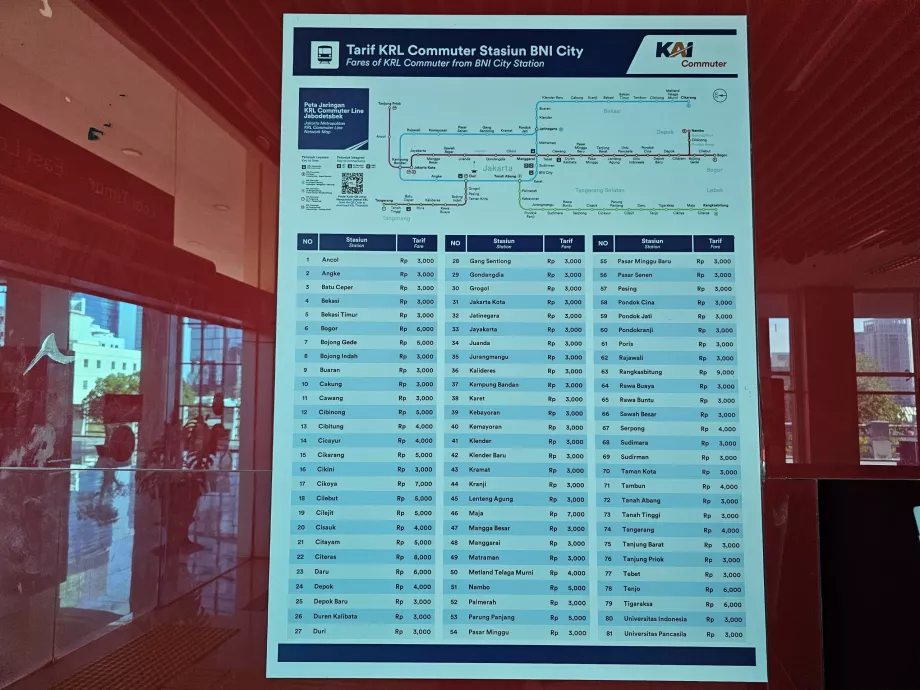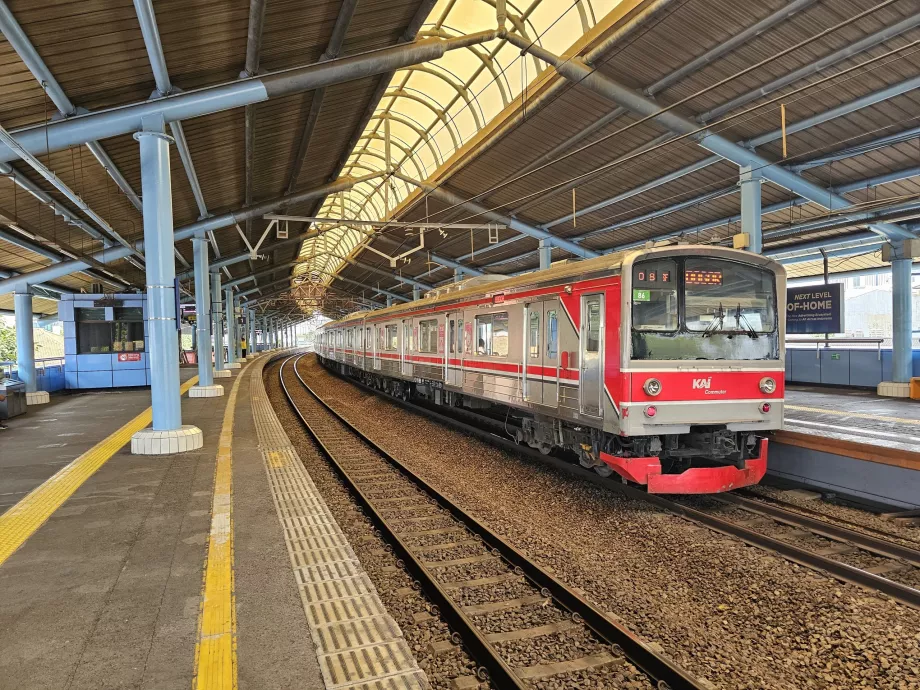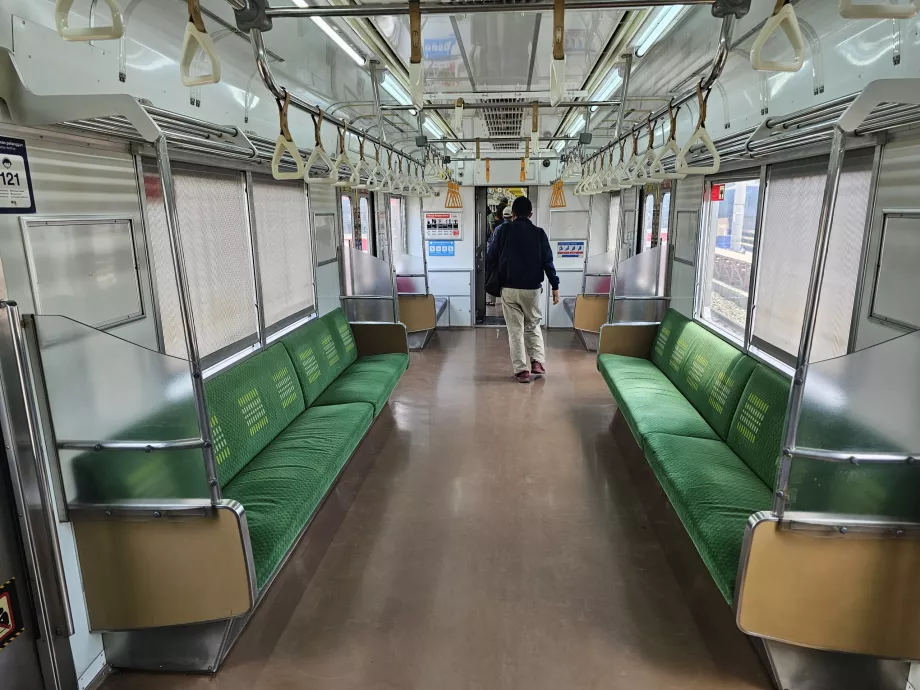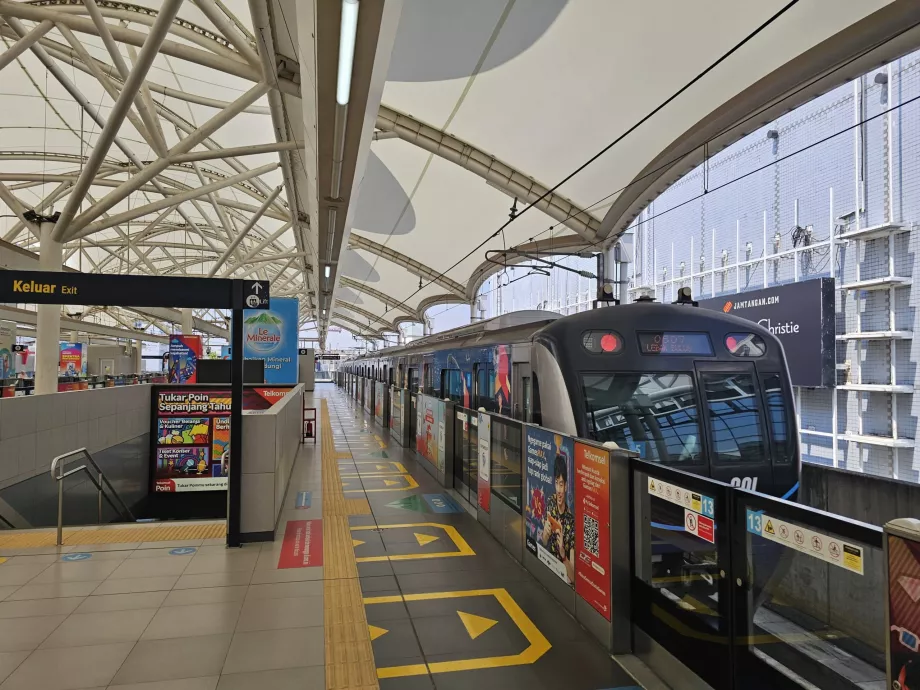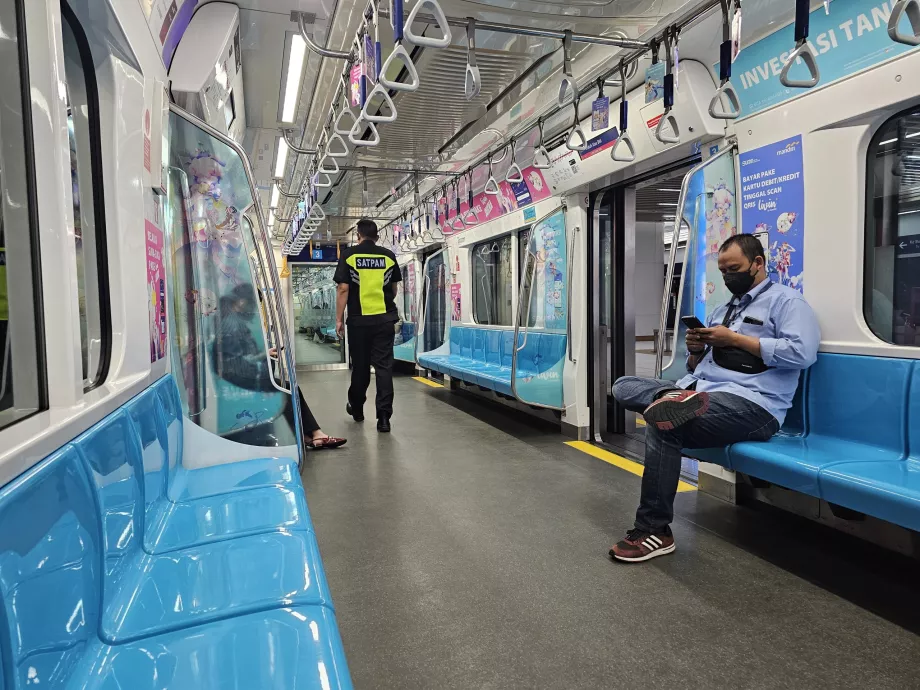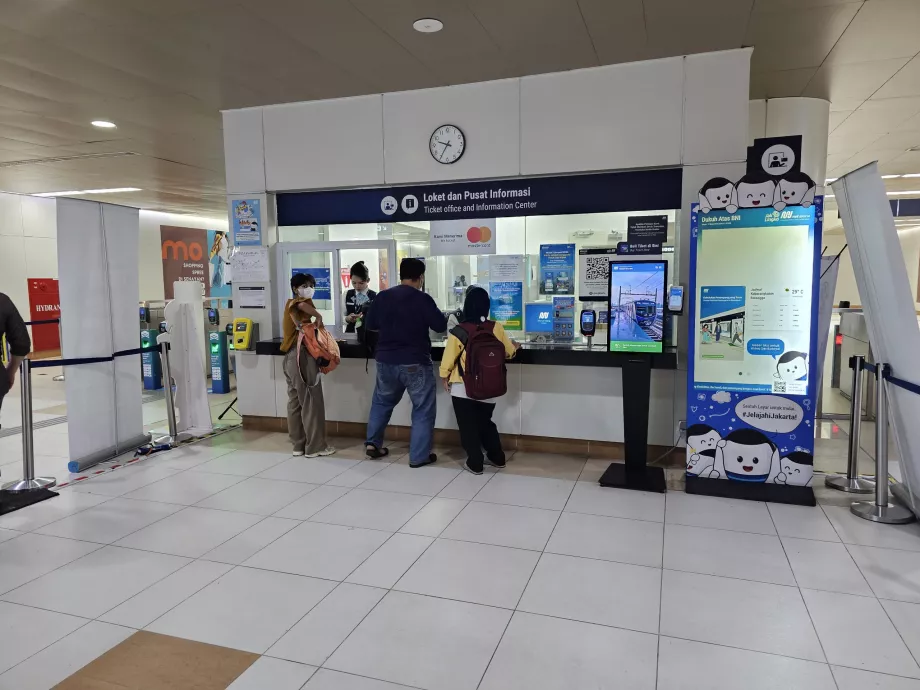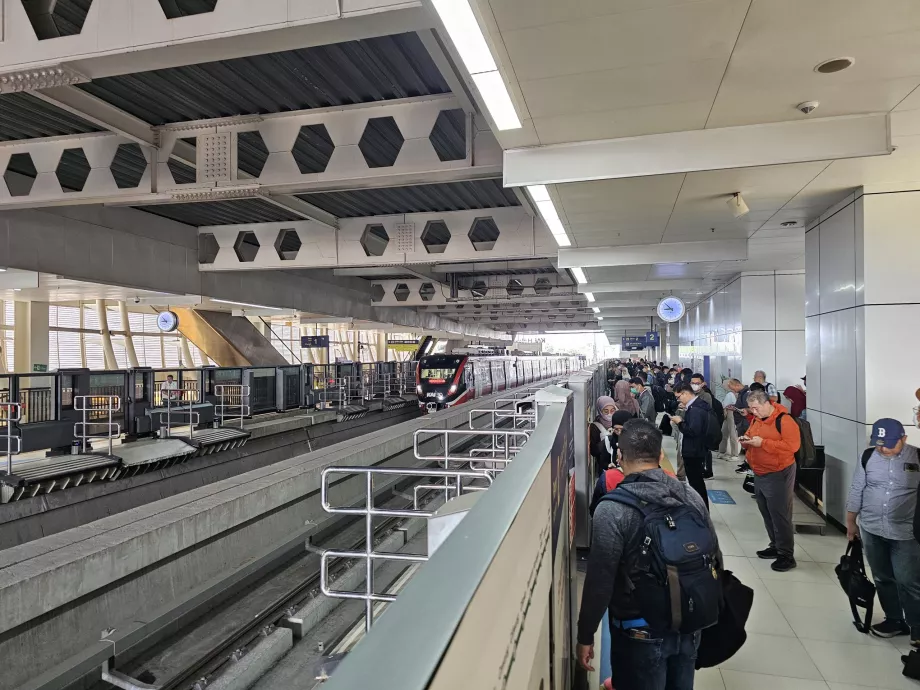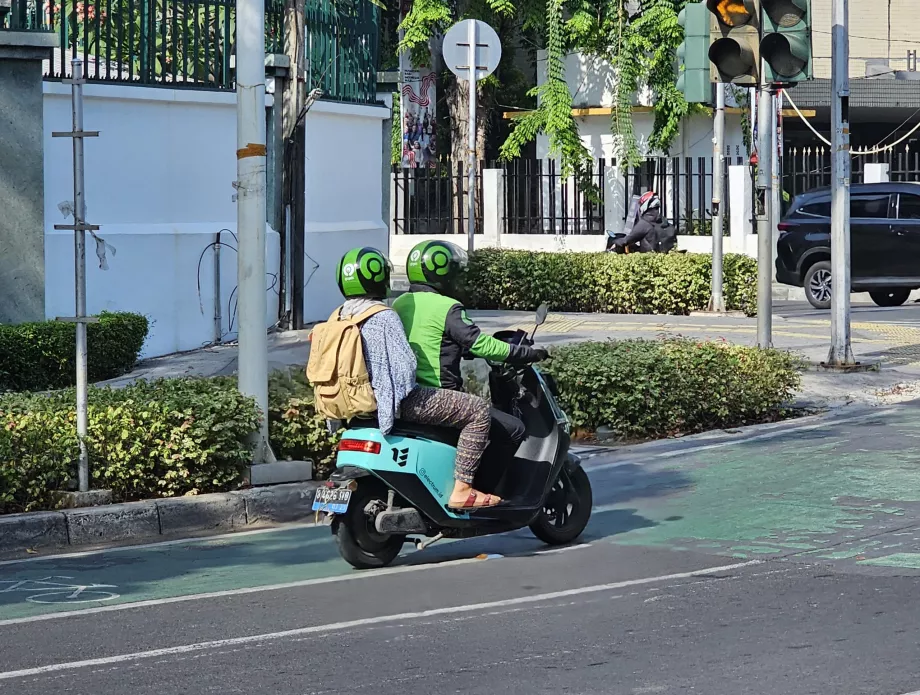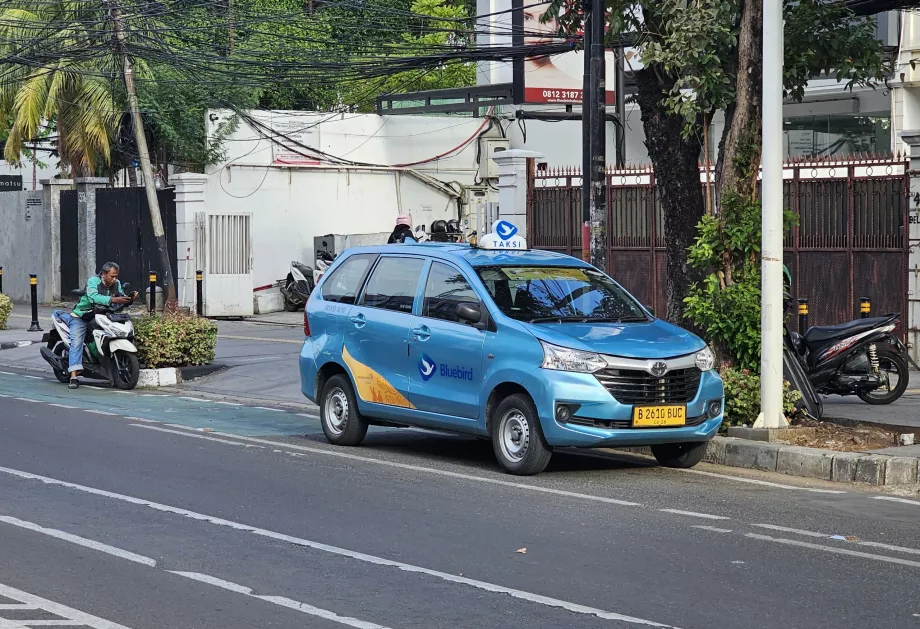Getting around Jakarta
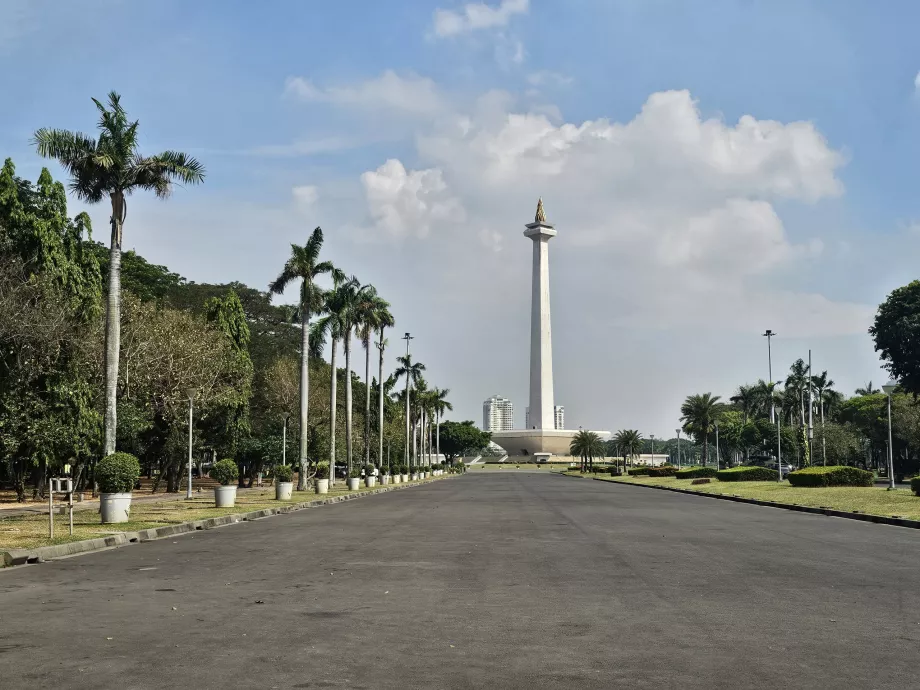
Although public transport in Jakarta is developing rapidly with the construction of two metro lines, it remains quite complicated and unclear.
Nevertheless, it is convenient for tourists to some places and, above all, public transport is very cheap and safe.
The most used and convenient modes of transport are the Grab and Gojek mobile apps.
Public transport
In Jakarta, trains, subways, light rail LRT (which is really just an elevated subway), BRT express buses, regular buses and minibuses all work to get around the city.
Buses and minibuses are covered by the TransJakarta system.
The great thing is that you can use the same electronic transport cards for all modes of transport. Moreover, some of them are valid in other cities in Indonesia.
Fares - JakLingko card and more
When travelling on any kind of public transport in Jakarta , you need to buy an electronic card to load the amount you choose.
This is gradually charged according to how much you ride. Unused credit cannot be refunded.
You can pay and top up your card with cash, but the fare itself is always deducted from the card only and there are no traditional paper tickets in Jakarta.
Cards issued at points of sale in Jakarta are collectively referred to as JakLingko, however they are always issued by a bank and in practice you may see these forms of cards:
- JakLingko - valid only in Jakarta and its surroundings
- Purchased from machines at TransJakarta bus and commuter train stations
- Cost 30 000 idr, of which 20 000 idr is the cost of the card itself and 10 000 idr is the minimum credit usable for fares
- BNI Tapcash - valid in other Indonesian cities (e.g. Yogyakarta, Bandung, Medan, Surabaya)
- Purchase at the ticket office at airport train stations (Manggarai and Sudirman/BNI City stations only) or at Indomaret and Alfa Mart/Alfa Express minimarkets
- Price 40 000 idr, of which 20 000 idr is the cost of the card itself and 10 000 idr is the minimum credit usable for fares
- E-money Mandiri - also valid in other Indonesian cities (e.g. Yogyakarta, Bandung, Medan, Surabaya)
- Purchase at the ticket office at airport train stations (Manggarai and Sudirman/BNI City stations only) or at Indomaret and Alfa Mart/Alfa Express minimarkets
- Price 40 000 idr, of which 20 000 idr is the cost of the card itself and 10 000 idr is the minimum credit usable for fares
- BRIZZI - also valid in other Indonesian cities (e.g. Yogyakarta, Bandung, Medan, Surabaya)
- Purchase at Indomaret and Alfa Mart / Alfa Express mini-markets
- Price 40 000 idr, of which 20 000 idr is the cost of the card itself and 10 000 idr is the minimum credit usable for fares
- BCA Flazz - valid in other Indonesian cities (e.g. Yogyakarta, Bandung, Medan, Surabaya)
- Purchase at Indomaret and Alfa Mart / Alfa Express mini-markets
- Price 40 000 idr, of which 20 000 idr is the cost of the card itself and 10 000 idr is the minimum credit usable for fares
How to top up the credit on the card?
You can top up your JakLingko card at all machines at TransJakarta train and bus stations. You can only pay by card.
The other cards (E-money, BNI Tapcash, BRIZZI, BCA Flazz) can only be topped up at Alfa Mart and Indomaret mini-markets, but they are literally on every corner. In this case, you can pay with cash and card.
You can top up these cards in any city in Indonesia, not just Jakarta.
TransJakarta buses
Buses remain the main form of transport for now, some of which run along special corridors separated from cars. Subways and commuter trains do not yet serve all tourist attractions.
TransJakarta has three types of bus routes.
The ticket price for all lines (BRT, regular buses and minibuses) is the same - 3 500 idr for one ride.
If you transfer between two BRT lines and do not leave the station (i.e. do not go through the turnstile), then you pay the price of Rs 3,500 only once. However, if you transfer between stations or between bus types, you will always have to pay again.
The operating hours of most lines are approximately 5:00 am to 10:00 pm.
BRT
Bus Rapid Transit partially avoids traffic jams, however, buses cannot avoid standing at traffic lights at intersections.
BRT lines are served by large blue-and-white buses and their stops are accessible only by passing through turnstiles. You attach an electronic card to the turnstile when entering and exiting the station.
The most useful corridors for tourists are the following:
- Route 1 - connects the old town of Kota Tua with the Monas Monument and then south towards Block M.
- Route 2, 2A, 5C - connects Senen Sentral with Monas Monument to Gambir train station
- Route 5, 5D - runs from the eastern part of the centre (Senen Sentral, Pasar Baru) to Ancol theme park
- Routes 6A, 6B - go to Ragunan Zoo
Buses on the main corridors run very frequently, on average every 5-10 minutes, but for example routes 1 or 6 run about every 2 minutes.
Some buses tend to be overcrowded, but you can usually just wait for the next bus, which will be significantly emptier.
Travel on BRT buses is safe, although it is advisable to keep a backpack or handbag close at hand (not on your back) as pickpockets may be present.
Some buses have a front section set aside for women only!
BRT buses are plotted on the TransJakarta transport map along with trains and subways.
Regular buses
As a supplement for local transport over shorter distances, orange and white buses run on regular streets alongside cars, with their stops at the edges of the street on the sidewalk.
However, there is no map of the routes of these buses, but the stops and the route number are shown on Google Maps, for example.
The Moovit app often incorrectly displays route maps for these lines.
After boarding, attach the electronic card to the reader at the driver's side. Somewhat illogically, you also have to attach the card when getting off the bus (the price 3 500 idr is flat for 1 ride, regardless of the distance travelled).
The card reader is only located at the driver's door and not at the second door, so you have to use the first door when exiting as well.
Minibuses (angkot)
Small microbuses in Indonesia, known as "angkot", used to be an extremely popular and also extremely confusing form of transport, especially in the outskirts of Jakarta.
However, there has been a consolidation into the TransJakarta system and now all microbuses have a line number (always with the letters "JAK", for example JAK89) and fixed routes.
The stops of these routes can also be found on Google Maps.
When boarding and alighting, it is necessary to attach an electronic ticket card to the reader.
Suburban trains
Suburban trains are the main rail network and for getting around the city. The operating hours of the trains are approximately 5:00 to 22:00, with some services on the B and C lines running until 23:00.
Prices are calculated slightly differently than for buses and always depend on the distance travelled. However, fares are very low.
- 3 000 idr - Price anywhere within Jakarta, for example from the city centre to the old town of Kota Tua
- to 6 000 idr - the highest price to the furthest destinations
When entering and exiting the platform, you always pass through a turnstile with an electronic transport card attached.
Alternatively, you can buy the card at all train stations.
In Jakarta you can use the following train lines.
- A (Airport Rail Link) - The line runs from downtown to Jakarta CGKAirport and has a special fare of 70 000 idr, which cannot be paid with electronic cards. You have to buy a regular paper ticket at the ticket machine.
- Frequency 30 minutes
- B - frequent line connecting Jakarta Kota Station (old town Kota Tua) with the city centre (Juanda Station - Mosque and Cathedral) and further south to Bogor
- Frequency 8-15 minutes
- C - frequent line connecting Cikarang and Bekasi to the city centre, where the train takes a wide circular route around the centre
- Frequency 8-15 minutes
- TP - short line running from Jakarta Kota Station (old town Kota Tua) via Ancol theme park to Tanjung Priok wharf
- Frequency 30 minutes
- T - runs from Duri station on the western edge of the city centre to Tangerang and has little tourist use
- R - runs from Tanah Abang station to Rangkasbitung town, where the LM suburban line connects to Merak town (ferries to Sumatra island)
- Frequency of the R line approx. 15-30 minutes
- Frequency of the LM line approx. 6 times a day
Official commuter rail website: commuterline.id. However, several lines are missing from the timetables on this website, even though they are normally in service.
Departure times, however, are accurately displayed by Google Maps when you click on a particular station icon.
MRT subway + LRT overground
The conventional subway network has only 3 lines so far.
- MRT - the classic metro has only the red line so far, it runs partly underground (in the centre) and outside the centre above ground
- Dukuh Atas (transfer to BNI City / Sudirman station) - Block M - Lebak Bulus
- LRT - overground metro divided into two lines
- Green line "BK" - runs from Dukuh Atas station via Cikoko, Cawang and Halim stations (transfer to high speed rail) to Jati Mulya
- Blue line 'CB' - runs from Dukuh Atas via Cikoko, Cawang and TMII stations (change to HSR) to Haryamukti
Frequency for all lines is approximately 8 minutes and operating hours are from 5:00am to 10:30pm.
Fares are relatively high compared to other modes of transport and are calculated according to the distance travelled.
For the MRT, fares range from 5 000 idr to 13 000 idr.
For LRT lines, the fare is 5 000 idr for the first 23 km and 700 idr for each additional 1 km.
- Official MRT website: jakartamrt.co.id
- Official LRT website: lrtjakarta.co.id/informasi-tiket
Grab / Gojek
For tourists, taxis via the Grab or Gojek mobile apps are the clearest and most convenient mode of transportation.
It's always worth comparing prices on both platforms, as they can vary by tens of percent.
You have a choice between cars and significantly cheaper motorbikes, but in terms of safety, non-breathable fumes and overall comfort, cars, almost always air-conditioned, are the best mode of transport despite the ubiquitous traffic jams.
Normal prices for driving within Jakarta (for example, from downtown to the old city of Kota Tua) are around 30 000 idr.
Compared to conventional taxis, this is a considerable saving, plus you can track the car's location on the app the moment it arrives and call or text it if it gets lost and goes the wrong way, which happens very often.
Toll payment
Jakarta's highway network is divided into toll roads and free streets.
A driver will often ask you if you want to take the "Toll Road" or not as you travel further out of the centre. We always recommend agreeing as you can save yourself up to 30 minutes of driving.
The toll usually costs 10 000 idr and the app will automatically include it in the final price charged to your card. Do not pay any cash to the driver.
Regular taxis
Taxis in Jakarta are operated by several companies, the largest of which is Bluebird.
You'll encounter their light blue or grey taxis on every corner and you can flag them down with a simple wave.
Taxis in Jakarta have to run according to the meter. Any tolls are not included in the meter and are paid in addition to the fare.
Taxi drivers only accept cash payments and prices are usually 15% to 20% higher than the Grab/Gojek mobile apps.
On foot
Jakarta is one of the worst big cities in the world for walking.
While there are sidewalks along the streets within the city center, pedestrians don't have the right of way over cars at crosswalks, and intersections with traffic lights make life uncomfortable with very long intervals.
Even at traffic lights you have to be extremely careful, because motorbikes in particular routinely run red lights.
Any questions left?
If you have any questions or comments about the article...
